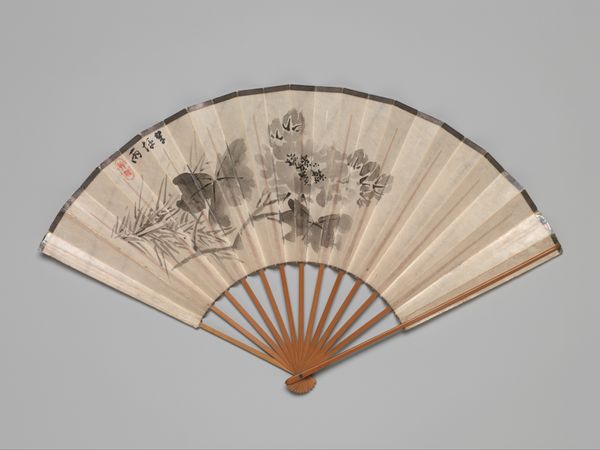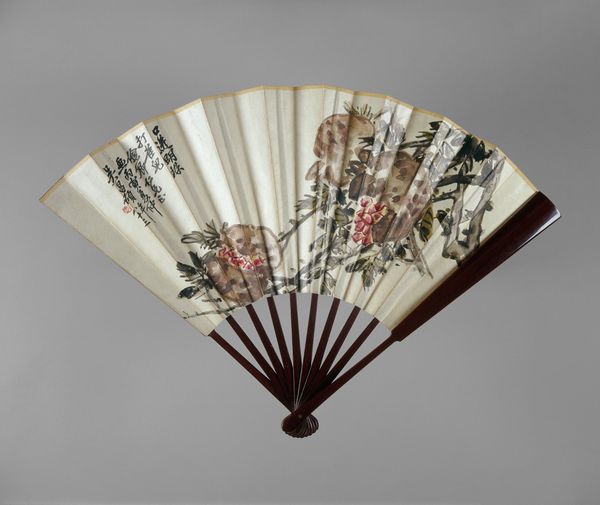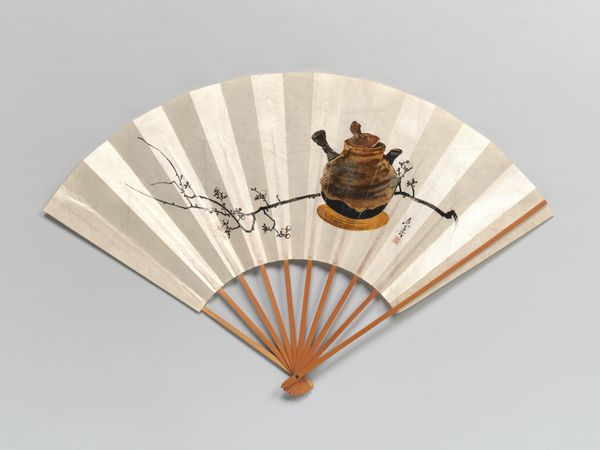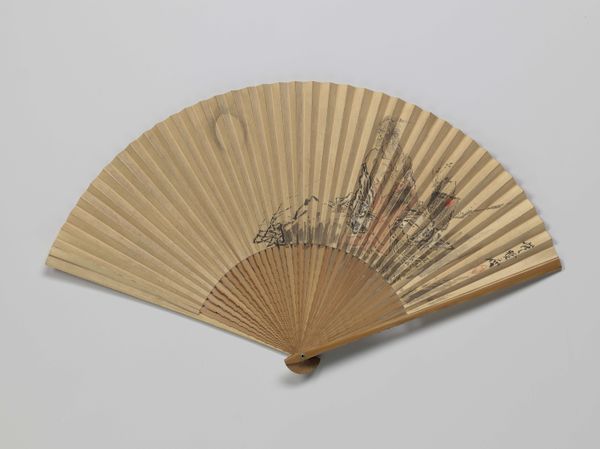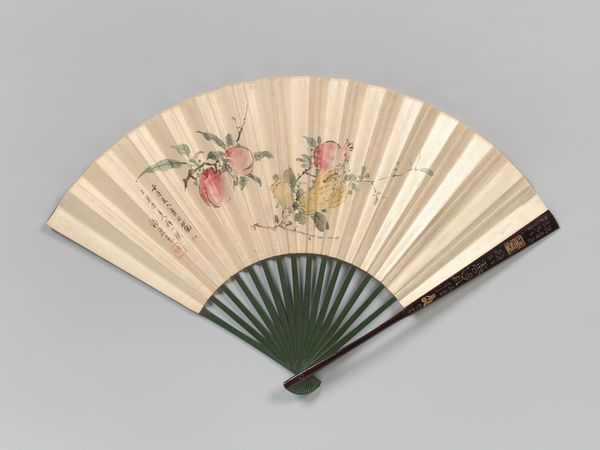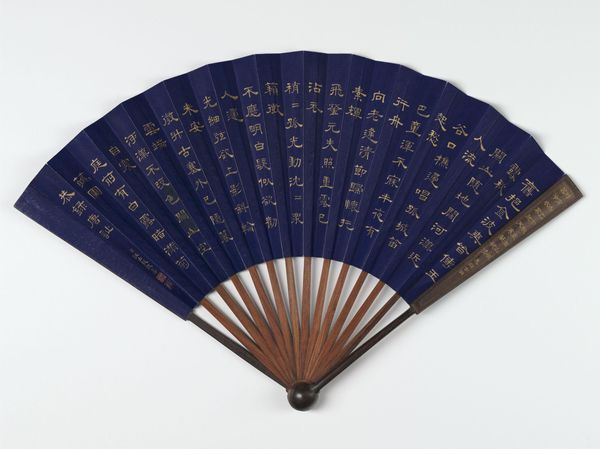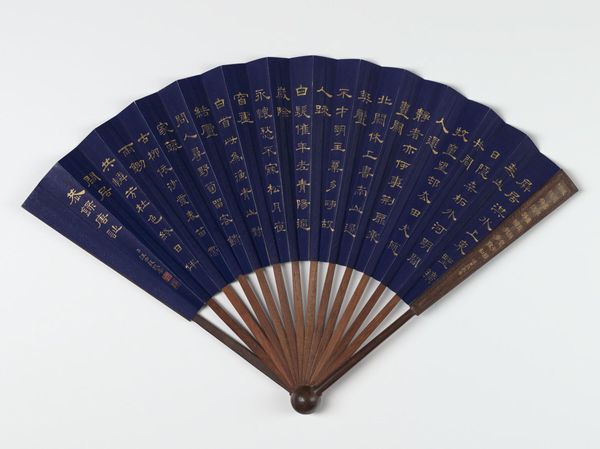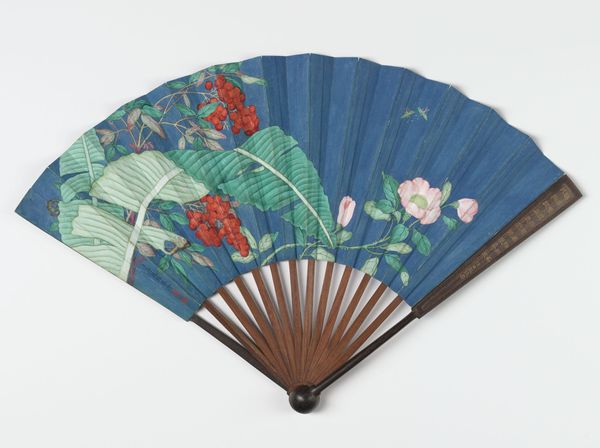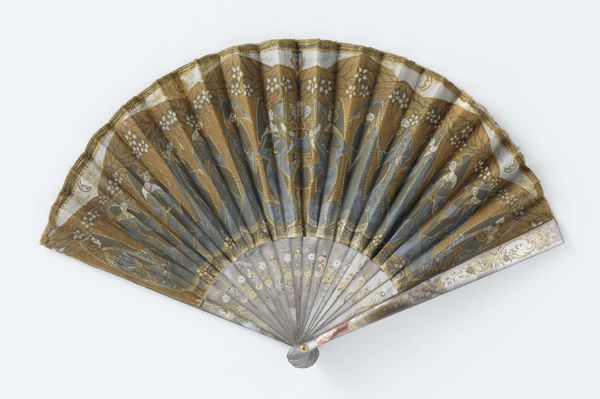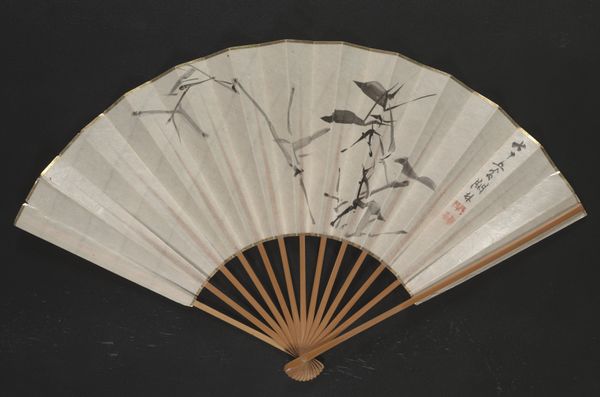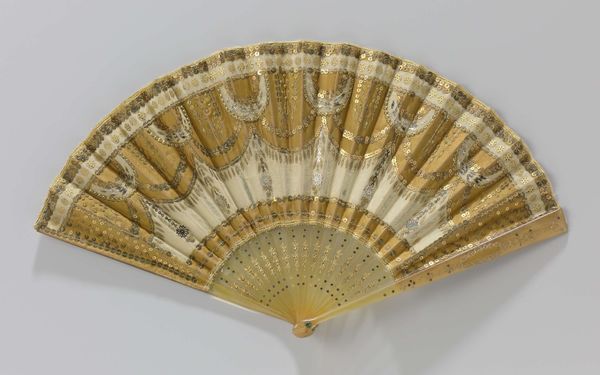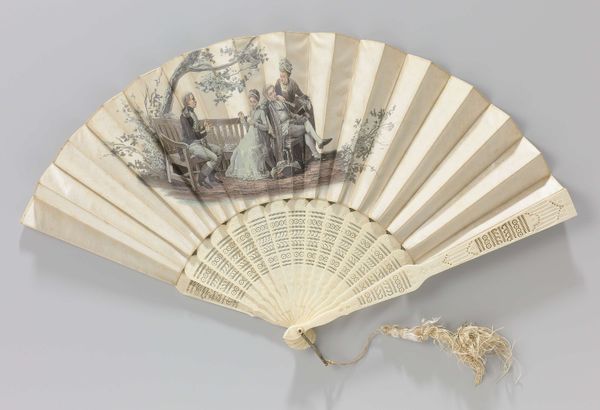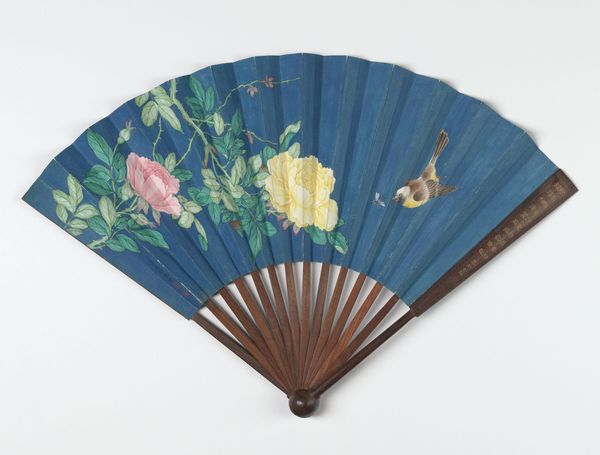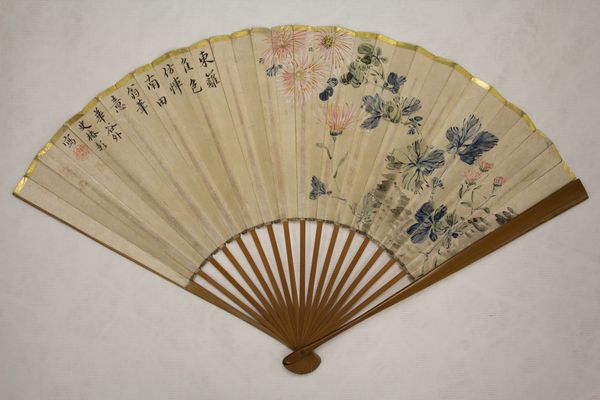
painting, paper, ink
#
painting
#
asian-art
#
landscape
#
ukiyo-e
#
japan
#
figuration
#
paper
#
ink
#
line
Dimensions: 12 1/4 × 18 11/16 × 1/2 in. (31.12 × 47.47 × 1.27 cm) (open)12 1/4 × 3/4 × 1 5/16 in. (31.12 × 1.91 × 3.33 cm) (closed)
Copyright: Public Domain
Curator: I'm immediately struck by how delicately rendered this scene is—so fragile, almost ephemeral. The lines are so fine, giving a real sense of winter’s hush. Editor: Indeed. This is Yamamoto Baiitsu’s "Snowy Landscape," an ink on paper painting from around the mid-19th century. It’s interesting to view this as ukiyo-e filtered through a more personal, scholarly lens. The artist was a noted scholar and painter within artistic circles. Curator: "Scholarly" is a good word. I see how the composition leads the eye upward through layers of thinly washed ink, creating depth despite the limited tonal range. There is very clever use of negative space. Editor: Absolutely. Baiitsu draws from classical Chinese landscape painting, filtered through Japanese aesthetics and socio-political thought, which elevated landscapes as embodiments of ideal virtues of scholar-officials. Landscape as a social and personal construct. Curator: Yes, and you feel that here; a conscious distancing from the immediate, perhaps? What interests me formally is the almost abstract quality that the lines achieve—suggesting the bare trees and distant mountains. Each brushstroke, while representational, also stands on its own. Editor: It speaks to a broader cultural context: the late Edo period saw the rise of a merchant class, eager to consume art. Landscape painting, accessible and relatable, flourished as both an artistic endeavor and commodity, reflective of broader socioeconomic mobility. Baiitsu's contribution becomes clearer through that lens. Curator: Very much agreed. Looking at it this way, it almost reads like a document of a society looking to both nature and their cultural predecessors for guidance, even comfort. It’s interesting that the piece takes the form of a fan. Editor: A functional item with cultural significance—fans have acted as status symbols throughout history and social settings. Baiitsu turns that context into an artifact itself! Curator: Seeing it as a confluence of formal mastery and cultural symbol is extremely compelling, thank you! Editor: And, for me, contemplating the artwork through its visual elements sheds more light on these contexts, proving that paying close attention to those shapes makes all the difference.
Comments
minneapolisinstituteofart almost 2 years ago
⋮
This fan painting by Yamamoto Baiitsu shows travelers crossing a bridge near an icy riverbank and a snow-covered mountain village. Now best known as a painter of bird and flower subjects, Baiitsu—along with his lifelong companion, Nakabayashi Chikutō (1776–1853), whose fan painting can be seen nearby—began studying old Chinese paintings as a child in his native Nagoya. After the death of their teacher in 1802, Baiitsu and Chikutō both set out for Kyoto to establish independent careers, though Baiitsu was less successful than Chikutō. After Chikutō’s death in 1853, Baiitsu returned to Nagoya to take up a position as Painter in Attendance to the Tokugawa-Owari family, lords of famous Nagoya Castle.
Join the conversation
Join millions of artists and users on Artera today and experience the ultimate creative platform.
